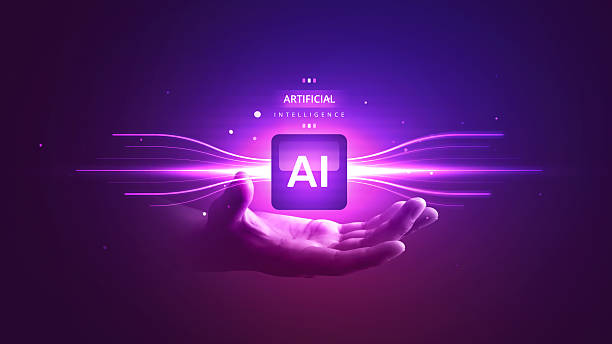What is an AI Assistant and What are its Applications?

#AI_Assistant is a software or system designed using Artificial Intelligence (AI) to help users perform various tasks.
These tasks can include answering questions, providing information, performing calculations, scheduling, generating content, and many more.
Artificial intelligence allows assistants to analyze data and patterns, provide accurate and appropriate responses, and learn from their interactions with users over time to improve their performance.
In general, an AI assistant, with the help of machine learning and natural language processing, is able to create a better user experience for people.
The applications of AI assistants are very broad and include various fields.
In businesses, AI assistants can be used in customer service, marketing, sales, and human resource management.
In personal life, these assistants can help with time management, travel planning, task reminders, and providing useful information to users.
Also, in the fields of education and healthcare, AI assistants can play an important role in providing educational content and medical advice.
For example, an AI assistant can be used as a #simultaneous_translator in international communications or help people with disabilities in performing daily tasks.
In short, AI assistants are powerful tools that can play an important role in improving efficiency, increasing productivity, and providing better services to users.
Ultimately, an AI assistant helps you perform your difficult tasks easily.
Are visitors leaving your online store before making a purchase? Don’t worry anymore! With Rasaweb’s professional online store website design services, solve the problem of not converting visitors into customers forever!
✅ Significant increase in conversion and sales rates
✅ Unique and attractive user experience
⚡ Contact us now to receive free consultation!
Types of AI Assistants and Their Features

AI Assistants are generally divided into two main categories: #Voice_Assistants and #Text_Assistants.
Each of these types has its own specific features and applications.
Voice assistants such as Amazon Alexa, Google Assistant, and Siri interact with users through voice recognition and Natural Language Processing (NLP).
They can answer questions, execute voice commands, search for information, and control smart home devices.
The main features of voice assistants include accurate voice recognition, fast response, and the ability to integrate with other services and devices.
Text assistants, such as chatbots and AI-based customer support tools, communicate with users via text.
They can answer text questions, solve problems, and provide the required information.
The main features of text assistants include natural language understanding, text analysis ability, and the ability to provide personalized responses.
Some text assistants can also use machine learning to improve their accuracy and efficiency.
Depending on the type and application, an AI assistant can use various algorithms to process information and provide answers.
These algorithms include neural networks, decision trees, and reinforcement learning algorithms.
Choosing the right type of AI assistant depends on the user’s specific needs and requirements.
If there is a need for quick and easy interaction through voice, voice assistants are a good option.
If there is a need to answer text questions and solve complex problems, text assistants can be a better choice.
Ultimately, an AI assistant is a powerful tool that can help improve efficiency and productivity in various fields.
Introducing the Best AI Assistants Available on the Market

The AI Assistants market is full of diverse options, each with its own specific features and capabilities.
Choosing the best AI assistant depends on personal needs and preferences.
Below, we introduce some of the best AI assistants available on the market:
1.
Google Assistant
Google Assistant is one of the most powerful and popular AI assistants that can be used on various devices, including smartphones, smart speakers, and cars.
The outstanding features of Google Assistant include accurate voice recognition, fast response, the ability to integrate with other Google services, and providing useful and relevant information.
Google Assistant can answer questions, execute voice commands, search for information, and control smart home devices.
One of the main advantages of Google Assistant is its continuous learning and improved performance over time.
2.
Amazon Alexa
Amazon Alexa is another popular AI assistant that can be used on Amazon Echo smart speakers and other Amazon devices.
Alexa has similar capabilities to Google Assistant, including answering questions, executing voice commands, and controlling smart home devices.
One of Alexa’s unique features is the ability to add new skills, which allows users to expand the assistant’s capabilities and customize it to their needs.
3.
Siri
Siri is Apple’s dedicated AI assistant that can be used on iOS and macOS devices.
Siri has basic capabilities such as answering questions, executing voice commands, and providing information.
Although Siri may not be as powerful as Google Assistant and Alexa, it is well integrated with the Apple ecosystem and provides a seamless user experience.
4.
Microsoft Cortana
Cortana is Microsoft’s AI assistant that can be used on Windows 10 and other devices.
Cortana has similar capabilities to other AI assistants, including answering questions, executing voice commands, and providing information.
Cortana can also manage reminders and integrate with other Microsoft services.
5.
Jasper
Jasper is an AI assistant for content generation.
This tool helps you create high-quality and engaging content for blogs, social media, and other marketing channels.
Using advanced machine learning algorithms, Jasper can generate texts that are grammatically correct and content-wise attractive.
| AI Assistant | Features | Operating System |
|---|---|---|
| Google Assistant | Accurate voice recognition, fast response, integration with Google services | Android, iOS, Web |
| Amazon Alexa | Support for new skills, control of smart devices | Amazon Echo, iOS, Android |
| Siri | Integration with the Apple ecosystem, simple user interface | iOS, macOS |
| Microsoft Cortana | Reminder management, integration with Microsoft services | Windows 10 |
| Jasper | High-quality content generation, correct grammar, attractive content | Web |
Ultimately, choosing the right AI assistant depends on your personal needs and preferences.
It is recommended to try several assistants before choosing so you can choose the best option for yourself.
For example, you can choose an AI assistant to help with your daily activities.
How to Choose the Right AI Assistant for Yourself?
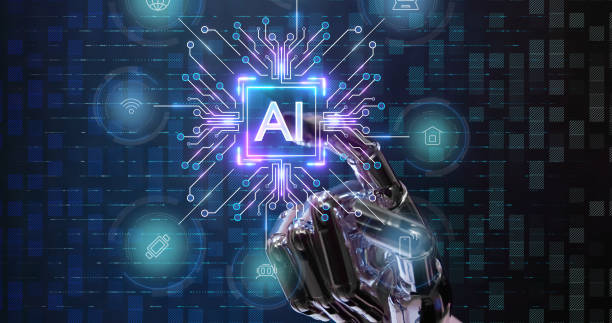
Choosing the right AI Assistant can have a big impact on your productivity and efficiency.
To make the right choice, you need to pay attention to various factors.
Below, we point out some of the most important of these factors:
1.
Needs and Requirements
First of all, you need to accurately specify your needs and requirements.
What tasks do you want to assign to the AI assistant? Do you need answers to questions? Do you want to control your smart home devices? Do you need content generation? By specifying the needs, you can limit your options and choose an assistant that best matches your needs.
2.
Compatibility with Devices and Operating Systems
The AI assistant must be compatible with the devices and operating systems you use.
If you use Apple devices, Siri is a good option.
If you use Android devices, Google Assistant can be a good choice.
Also, you should pay attention to whether the AI assistant can be used on different devices (such as smartphones, tablets, and smart speakers) or not.
3.
Features and Capabilities
The features and capabilities of the AI assistant must match your needs.
Some assistants have more advanced features, such as continuous learning, personalized response, and integration with other services.
Check if the AI assistant has features that are important to you, such as the ability to control smart home devices, manage reminders, and provide relevant information.
4.
Price
Some AI assistants are free, while others require payment.
Before choosing, check the assistant’s price and make sure it fits your budget.
Also, pay attention to whether the assistant has additional costs, such as a subscription fee to access advanced features.
5.
Privacy and Security
The privacy and security of your information is very important.
Before choosing an AI assistant, review its privacy and security policies and make sure your information is securely stored and not shared with third parties.
The AI assistant can help you get things done.
Does your current company website not reflect your brand’s credibility and strength as it should? Rasaweb solves this challenge for you with professional corporate website design.
✅ Increase the credibility and trust of visitors
✅ Attract more targeted customers
⚡ Click here for free consultation!
How to Use an AI Assistant to Increase Productivity

AI Assistants can be powerful tools to increase productivity in personal and professional life.
By using these assistants correctly, you can perform your tasks faster and more efficiently and spend more time on more important tasks.
Below, we point out some of the ways to use AI assistants to increase productivity:
1.
Time Management
AI assistants can help you with time management.
You can use them to plan daily, remind tasks, and schedule appointments.
Using voice or text commands, you can instruct the assistant to record an event in your calendar or set a reminder for a specific task.
This ensures that you never forget important tasks and always do them on time.
2.
Performing Repetitive Tasks
Many daily tasks are repetitive and take up a lot of your time.
AI assistants can automate these tasks and free up your time.
For example, you can use the assistant to send repetitive emails, search for information, and convert files.
3.
Controlling Smart Home Devices
If you use smart home devices, you can use the AI assistant to control them.
You can use voice commands to turn lights on and off, adjust the thermostat temperature, and control other devices.
This makes your life easier and more comfortable.
4.
Content Generation
AI assistants can help you with content generation.
You can use them to write articles, produce social media posts, and create marketing content.
Although assistants cannot completely replace human writers, they can help you produce fast and high-quality content.
The AI assistant helps you create a written piece.
5.
Continuous Learning
AI assistants can help you with continuous learning.
You can use them to search for information, read articles, and participate in online courses.
By using assistants, you can easily access the information you need and increase your knowledge.
Important Tips on Maintaining Privacy and Security When Using an AI Assistant

Using AI Assistants can have many benefits, but at the same time, you should also pay attention to maintaining the privacy and security of your information.
AI assistants collect and process a lot of information, including personal information, audio information, and location information.
If this information is not properly protected, it may be at risk.
Below, we point out some important tips on maintaining privacy and security when using an AI assistant:
1.
Review Privacy Policies
Before using any AI assistant, carefully review its privacy policies.
Make sure you know what type of information is collected, how it is used, and with whom it is shared.
If you do not agree with the privacy policies, do not use the assistant.
2.
Limiting Accesses
Only give the AI assistant the necessary accesses.
If the assistant does not need access to specific information, limit its access.
For example, if the assistant does not need access to your location information, disable its location access.
3.
Using a Strong Password
Use a strong password for your AI assistant account.
The password must include uppercase and lowercase letters, numbers, and symbols.
Avoid using simple and predictable passwords.
4.
Enabling Two-Factor Authentication
If the AI assistant supports two-factor authentication, enable it.
Two-factor authentication adds an extra layer of security to your account and prevents unauthorized access to it.
5.
Software Update
Always keep your AI assistant software up to date.
Updates include security fixes that can protect you from security threats.
6.
Caring for Audio Information
AI assistants collect and store your audio information.
If you are concerned about your privacy, you can disable audio recording or delete your audio information regularly.
7.
Awareness of Security Risks
Be aware of the security risks associated with using AI assistants.
Hackers may try to access your account or use the assistant to collect your personal information.
Be vigilant and take action quickly if you notice any suspicious activity.
By following these tips, you can maintain the privacy and security of your information when using AI assistants.
The AI assistant can help a lot.
The Future of AI Assistants and Their Impact on Our Lives
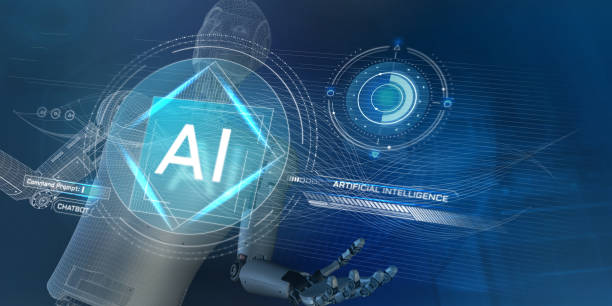
AI Assistants are developing rapidly and are expected to play a more important role in our lives in the near future.
With the advancement of AI and machine learning technologies, assistants will be able to perform more complex tasks and interact more effectively with users.
Below, we point out some of the future trends of AI assistants and their impact on our lives:
1.
Improving Natural Language Understanding Capabilities
One of the most important future trends of AI assistants is to improve the capabilities of Natural Language Understanding (NLP).
With the advancement of NLP, assistants will be able to understand human language more accurately and respond to users’ questions and requests with greater accuracy.
This makes interaction with assistants more natural and easier.
2.
More Personalization
AI assistants will be able to provide users with more personalized experiences in the future.
By analyzing data collected from users, assistants can identify each user’s needs and preferences and adjust their responses and suggestions accordingly.
This makes assistants more useful and efficient for each user.
3.
Integration with Other Technologies
AI assistants will be integrated with other technologies such as the Internet of Things (IoT), Augmented Reality (AR), and Virtual Reality (VR) in the future.
This integration enables assistants to understand the user’s surroundings and interact with them more effectively.
For example, the assistant can control smart home devices using IoT or provide the user with useful information about the surrounding environment using AR.
4.
Increasing Automation
AI assistants will be able to perform more tasks automatically in the future.
This allows users to spend more time on more important tasks and increase their productivity.
For example, the assistant can automatically respond to emails, schedule meetings, and generate reports.
5.
Increasing Accessibility
In the future, AI assistants will be usable on more devices and access to them will be provided to more people.
This turns assistants into an essential tool in daily life and helps people perform various tasks.
The AI assistant will become a widely used tool.
| Trend | Description | Impact on Life |
|---|---|---|
| Improving Natural Language Understanding | More accurate understanding of human language by the assistant | Easier and more natural interaction with the assistant |
| More Personalization | Providing personalized experiences based on needs | More useful and efficient assistant for each user |
| Integration with Other Technologies | Integration with IoT, AR, VR | More effective interaction with the surrounding environment |
| Increasing Automation | Automating more tasks | Increasing productivity and saving time |
| Increasing Accessibility | Access to the assistant for more people | An essential tool in daily life |
However, we must also pay attention to the challenges associated with the development of AI assistants.
These challenges include maintaining privacy, information security, and ethical issues.
By considering these challenges and striving to solve them, we can fully benefit from the advantages of AI assistants and have a better life.
Comparing AI Assistants with Other Automation Tools
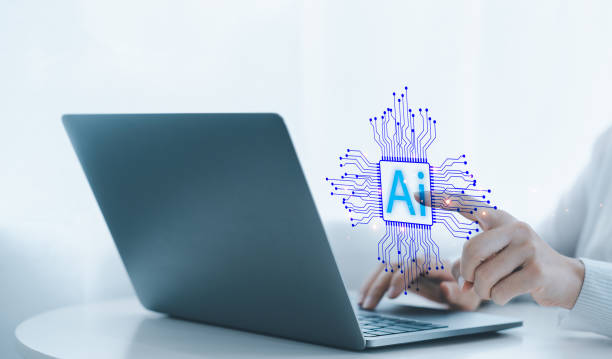
AI Assistants are one of the Automation Tools that aim to increase productivity and reduce the time spent performing various tasks.
However, assistants have differences with other automation tools that make them unique.
Below, we compare AI assistants with other automation tools:
1.
Robotic Process Automation (RPA)
Robotic Process Automation (RPA) are software that automate repetitive and rule-based tasks.
RPA is usually used to automate business processes, such as data entry, invoice processing, and report generation.
The main difference between RPA and AI assistants is that RPA is rule-based and cannot perform complex and unexpected tasks, while AI assistants can perform more complex tasks and adapt to new situations using AI and machine learning.
2.
Project Management Tools
Project management tools are software that help users plan, track, and manage projects.
These tools usually include features such as task assignment, deadline setting, and progress tracking.
The main difference between project management tools and AI assistants is that project management tools are designed to manage specific projects, while AI assistants can help perform various tasks in various fields.
3.
Chatbots
Chatbots are software that interacts with users via text or voice.
Chatbots are usually used to provide customer service, answer questions, and provide information.
The main difference between chatbots and AI assistants is that chatbots are usually designed for specific tasks, while AI assistants can help perform various tasks and have broader capabilities.
4.
Marketing Automation Software
Marketing automation software are tools that help marketers automate their marketing campaigns.
This software usually includes features such as sending automatic emails, managing social networks, and analyzing marketing data.
The main difference between marketing automation software and AI assistants is that marketing automation software is designed to automate marketing processes, while AI assistants can help perform various tasks in various fields.
The AI assistant has more features than other tools.
Still don’t have a corporate website and are missing out on online opportunities? With professional corporate website design by Rasaweb,
✅ Double your business credibility
✅ Attract new customers
⚡ Free consultation for your corporate website!
Challenges and Limitations of AI Assistants

AI Assistants, despite their many advantages, also face challenges and limitations.
These challenges and limitations can have a big impact on the performance and capabilities of assistants.
Below, we point out some of the most important challenges and limitations of AI assistants:
1.
Limitations of Natural Language Understanding
AI assistants still have limitations in understanding human natural language.
They may not be able to understand complex and ambiguous sentences correctly or may not be able to distinguish subtle differences in meaning.
This can lead to incorrect or inappropriate responses.
2.
Need for Training Data
AI assistants need a lot of training data to learn and improve their performance.
If sufficient or appropriate training data is not available, the assistant cannot learn effectively and perform well.
3.
Privacy and Security Issues
AI assistants collect and process a lot of information, including personal information, audio information, and location information.
This can lead to privacy and security issues.
If information is not properly protected, it may be at risk.
4.
Ethical Issues
The use of AI assistants can also raise ethical issues.
For example, if the assistant makes decisions that are detrimental to people, who will be responsible? Or if the assistant provides incorrect information, who will be accountable?
5.
Dependence on the Internet
Many AI assistants need the internet to function.
If the internet connection is interrupted, the assistant cannot perform its tasks.
6.
Hardware Limitations
The performance of AI assistants can also depend on hardware limitations.
If the device on which the assistant is running does not have enough processing power, the assistant cannot work effectively.
Given these challenges and limitations, caution should be exercised when using AI assistants and attention should be paid to potential risks.
The AI assistant is not always a complete tool.
Solutions to Solve Common Problems in Using AI Assistants
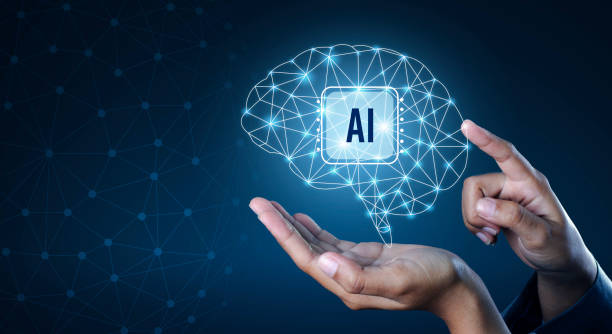
Using AI Assistants can be associated with problems.
However, these problems can be solved by using appropriate solutions and the benefits of assistants can be fully realized.
Below, we point out some common problems in using AI assistants and solutions to solve them:
1.
Problem in Natural Language Understanding
If the assistant has trouble understanding your natural language, you can try to express your sentences in a simpler and clearer way.
You can also use keywords and avoid slang terms.
If the problem persists, you can use feedback to the assistant to improve its performance.
2.
Incorrect or Inappropriate Responses
If the assistant gives incorrect or inappropriate responses, you can try to ask your question more accurately and clearly.
You can also use reliable sources to verify the information provided by the assistant.
If the problem persists, you can use feedback to the assistant to improve its performance.
3.
Privacy and Security Issues
To solve privacy and security issues, you can carefully review the assistant’s privacy policies and use privacy settings to have more control over your information.
You can also use a strong password and enable two-factor authentication.
4.
Internet Connection Problems
If the assistant does not work due to internet connection problems, you can check your internet connection and make sure it is working properly.
You can also use a stronger Wi-Fi network or use your mobile data connection.
5.
Hardware Problems
If the assistant does not work due to hardware problems, you can restart your device or reinstall the assistant software.
If the problem persists, you may need to repair or replace your device.
6.
Learning Problems
If the assistant does not learn correctly and its performance does not improve, you can try to provide more training data to the assistant.
You can also use more advanced machine learning algorithms or get help from an AI expert.
The AI assistant gets better with your help.
Frequently Asked Questions
| Question | Answer |
|---|---|
| What is an AI assistant? | An AI assistant is a software program that uses artificial intelligence to perform various tasks for users, such as answering questions, setting reminders, playing music, and managing calendars. |
| What are some of the most famous AI assistants? | Some of the most famous AI assistants include Apple’s Siri, Google Assistant, Amazon’s Alexa, and Microsoft’s Cortana. |
| How does an AI assistant work? | These assistants use natural language processing (NLP) to understand voice or text commands from the user, and machine learning to improve performance and personalize responses. |
| What are the main applications of AI assistants? | The main applications include setting alarms and reminders, playing music and podcasts, answering general questions, sending messages, making calls, controlling smart home devices, and providing weather or traffic information. |
| Can AI assistants speak with different accents? | Yes, many modern AI assistants have the ability to recognize and generate speech with different accents and languages. |
| What are the differences between an AI assistant and a chatbot? | An AI assistant is usually more comprehensive and can perform various tasks beyond answering text questions (such as controlling devices). Chatbots are mainly designed for text conversations on websites or messaging apps. |
| Is it safe to use an AI assistant? | Companies try to ensure data security, but there are concerns about privacy and the storage of voice data. Users should review their privacy settings. |
| What will the future of AI assistants be like? | It is expected that in the future, AI assistants will be smarter, more predictive, and more capable of integrating with daily life and other devices, and will be able to perform more complex tasks. |
| How can I activate an AI assistant? | They are usually pre-installed on smartphones and smart home devices. You can activate them by saying “Hey Siri”, “Ok Google” or “Alexa” and then giving your command. |
| Can an AI assistant help me learn? | Yes, it can help in learning by providing information, defining words, translating texts, and even solving math problems. It can also play educational podcasts for you. |
And other services of Rasa Web advertising agency in the field of advertising
Smart digital advertising: A creative platform to improve website traffic by intelligently analyzing data.
Smart brand identity: Designed for businesses looking to increase sales through attractive user interface design.
Smart data analysis: A fast and efficient solution to increase sales by focusing on attractive user interface design.
Smart social media: An innovative service to increase sales through custom programming.
Smart Google Ads: A combination of creativity and technology to increase click-through rate by custom programming.
And more than hundreds of other services in the field of internet advertising, advertising consulting and organizational solutions
Internet advertising | Advertising strategy | Reportage ad
Sources
Introducing Microsoft Copilot for Microsoft 365
,Generative AI Assistants for SEO
,AI everywhere
,Google Assistant Developers Site
? Are you ready to transform your business in the digital world? Rasaweb Afarin, with expertise in secure website design and comprehensive digital marketing services, is your trusted partner to reach the heights of success.
📍 Tehran, Mirdamad Street, next to the Central Bank, South Kazerun Alley, Ramin Alley No. 6

